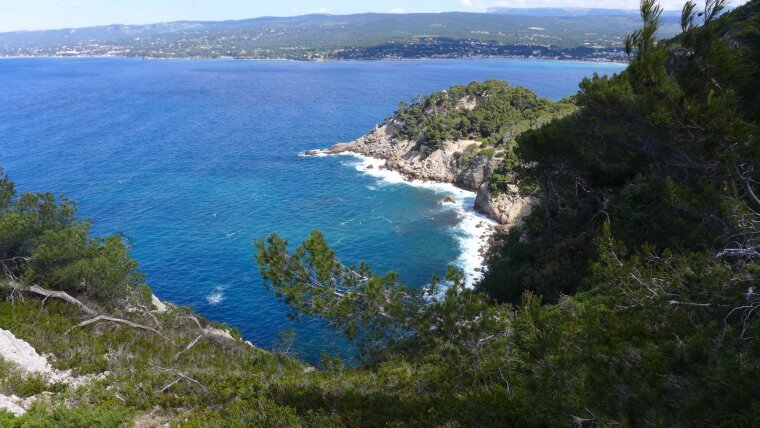
Master Evolution, Ecology and Systematics
Excursions 2026
Dear students,
in 2026 we will offer the following destinations for the MEES.C5 excursions! If you are interested in participating, please contact the responsible persons (see below) as soon as possible (see registration deadlines).
Ecology and Diversity of Mediterranean Ecosystems (Southern France; Provence, Côte-d‘Azur)
Christine Römermann & Markus Bernhardt-Römermann
- 21 May – 31 May 2026
- Registration deadline: 31 January 2026
- Available places: 14
- Premeeting: Tba
- Contact & registration: markus.bernhardt@uni-jena.de
Arthropods of the Mediterranean (Italy or Croatia)
Hans Pohl
- 22 May – 31 May 2026
- Registration deadline: 31 January 2026
- Available places: 12
- Contact & registration: hans.pohl@uni-jena.de
Other destinations will follow soon
Excursions2025
Autumn bird migration at the North Sea (Germany: Sylt and Klappholttal/List)
Attention: This excursion will be held in German
Gunnar Brehm & Stefan Rathgeber
- 11 October – 18 October 2025
- Registration deadline: 10 February 2025
- Available places: 5
- Contact & registration: gunnar.brehm@uni-jena.de
Arthropods of the Mediterranean (Italy, Lago di Trasimeno)
Hans Pohl
- 07 June – 14 June 2025
- Registration deadline: 10 February 2025
- Available places: 12
- Flyer: Downloadpdf, 2 mb
- Contact & registration: hans.pohl@uni-jena.de
Taxonomic and functional responses of steppe vegetation to changes in the environment in Mongolian Rangelands
Attention: The excursion starts and ends in Ulaanbaatar (Mongolia). You have to organize your flight tickets and visa yourself (we will provide advice on suitable flights).
Anna Vincze & Sebastian Gebauer
- 16 July – 26 July 2025
- Registration deadline: 10 February 2025
- Available places: 12-14
- Premeeting: 18.02.2025, 17:15 h, SR124 Philosophenweg 12
- Contact & registration: anna.vincze@senckenberg.de
Excursions in recent years (selection)
- 2025: Taxonomic and functional responses of steppe vegetation to changes in the environment in Mongolian Rangelands (Mongolia)
- 2025: Autumn bird migration at the North Sea (Germany; Sylt and Klappholttal/List)
- 2025: Arthropods of the Mediterranean (Italy; Lake Trasimeno)
- 2024: Ecology and diversity of Mediterranean ecosystems (Southern France; Provence, Côte-d‘Azur)
- 2024: Bird migration, Spain (Tarifa)
- 2023: Flora of Abruzzo and Southwestern Alps (Italy)
- 2022: Arthropods of the Mediterranean (Istria, Croatia)
- 2022: Flora of the Peloponnese: Orchids and Geophytes (Greece)
- 2022: Ecology and diversity of Mediterranean ecosystems (Southern France; Provence, Côte-d‘Azur)
- 2022: Bird migration, Spain (Tarifa)
- 2021: Arthropods of the Mediterranean (Italy, Lake Trasimeno)
- 2021: Arthropods of the Mediterranean (Italy, Friuli and Tuscany)
- 2019: Arthropods of the Mediterranean (Italy, Lake Trasimeno)
- 2019: Bird migration, Spain (Tarifa)
- 2018: Biogeography (Croatia , Dugi Otok)
- 2016: Biogeography (Croatia , Dugi Otok)
- 2015: Ecology and diversity of Mediterranean ecosystems (Southern France; Provence, Côte-d‘Azur)
Excursion 2019 and 2021: Italy (Lake Trasimeno)
Arthropods
Responsible: Hans Pohl
Lake Trasimeno is located in the Umbria region west of Perugia and is surrounded by mountains up to 600 metres high. The lake’s surroundings are characterised by a variety of different habitats, such as reedy shore regions, extensively used olive groves and meadows, macchie and forest with small streams that often dry up in summer. These habitats have a very species-rich arthropod fauna.
During the excursion we visited habitats directly around Lake Trasimeno, but also the more than 1700 m high densely forested Monte Amiata and the Formone River in Val d'Orcia with a wide pebbly riverbed. Participants worked on web spiders and scorpions, millipedes, praying mantises, cockroaches, termites and grasshoppers, true bugs and cicadas, Hymenoptera, beetles, as well as butterflies and moths. The picture gallery shows some interesting species.
-
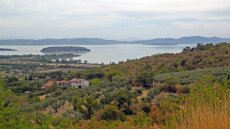
Lake Trasimeno (Italy)
Image: Lars Möckel -
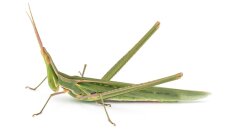
Cone-headed grasshopper Acrida ungarica
Image: Hans Pohl -
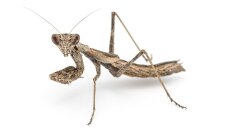
Praying mantis Ameles decolor
Image: Hans Pohl -
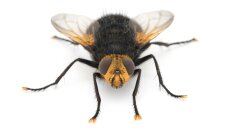
Giant tachinid fly Tachina grossa
Image: Hans Pohl -
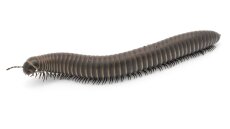
Millipede Ommatoiulus rutilans
Image: Hans Pohl -
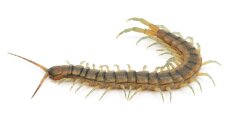
Mediterranean banded centipede Scolopendra cingulata
Image: Hans Pohl -
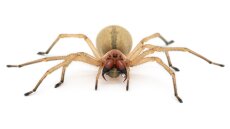
Yellow sac spider Cheiracanthium punctorium
Image: Hans Pohl -
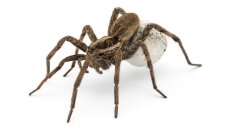
Tarantula wolf spider Lycosa tarantula with egg sac
Image: Hans Pohl
Excursion 2021: Italy (Friuli and Tuscany)
Southern Alps, Northern Apennines and Apuan Alps - habitats and flora
Responsible: Dimitrij Trofimov and Jochen Müller
The Apuan Alps are located in the north-west of the province of Tuscany and border on the Tyrrhenian Sea. The mountains are characterized by high precipitation and account for about 30% of all Italian flora. Geologically, the Apuan mountain region is mainly composed of marble. The southern Alps in northern Italy consist mostly of calcareous rock formations. The excursion destination was close to the Slovenian and Austrian borders. Due to the geological conditions in both mountain regions, a rich flora occurs, including many endemic species.
The objectives of the excursion were to get to know ecological and geological aspects of the visited areas. The focus was on the knowledge of characteristic species in the two Italian mountains.
- Tusco-Emilian Apennines near Abetone (Tuscany)
- Forte dei Marmi on the Tyrrhenian Sea (Tuscany)
- Wild River Meduna near Vivaro (Friuli)
- Rocky Coast Nature Reserve near Duino (Venezia Giulia)
- Carnic Alps and Pre-Alps (Friuli)
- Apuan Alps (Northern Tuscany)
-
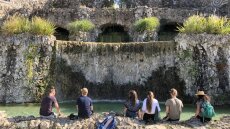
Visit to Florence
Image: Dimitrij Trofimov -
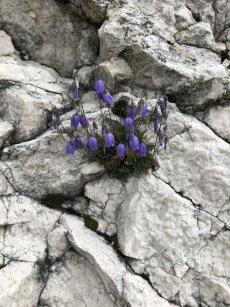
Campanula cespitosa
Image: Dimitrij Trofimov -
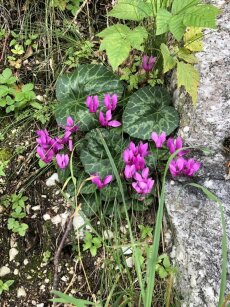
Cyclamen purpurascens
Image: Dimitrij Trofimov -
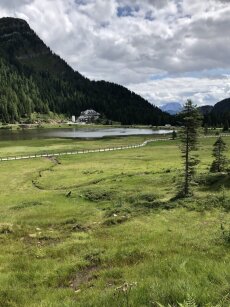
Lago di Pramollo, Alpi Carniche
Image: Dimitrij Trofimov -
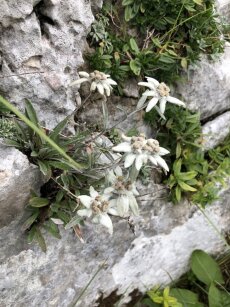
Leontopodium nivale
Image: Dimitrij Trofimov -
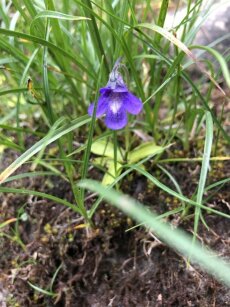
Pinguicula sp.
Image: Dimitrij Trofimov -
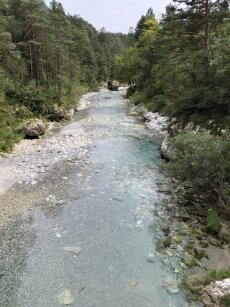
Torrente Arzino, Prealpi Carniche
Image: Dimitrij Trofimov -
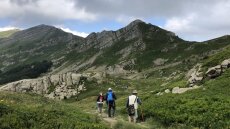
Val di Luce, Appennino Tosco-Emiliano
Image: Dimitrij Trofimov
Exkursion 2019, 2022, 2024: Spain (Tarifa)
Bird migration
Responsible: Holger Schielzeth
Every year millions of migratory birds are on the move between their breeding and wintering grounds. There are few places in Europe where bird migration can be better observed than in southern Spain, where thousands of soaring birds cross the narrow strait of Gibraltar that separates Europe and Africa. We stay at an international bird observatory run by the Migres Foundation. Migres implements systematic counts of migratory raptors and scientific bird ringing programs. These programs allow insights into the ecology of bird migration and population trends of many migratory species.
We join bird ringing sessions of passerine birds and – quite fascinatingly – black kites, count soaring birds of dozens of species and thousands of individuals, watch migratory seabirds and cetaceans. We search for owls, nightjars and bats at night and for birds and dragonflies during the day. We read a number of bird rings in the field and locate elusive chameleons in the coastal dunes. We learn about the strategies of migratory birds to cross oceans and deserts and about the challenges to bird conservation along migratory routes. A diverse program with a focus on bird migration that remains one of the most fascinating phenomena in nature.
-
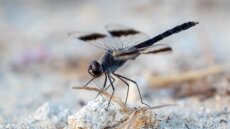
Banded Groundling (Brachythemis leucosticta)
Image: Holger Schielzeth -
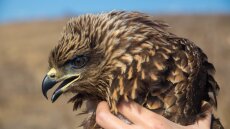
Black Kite (Milvus migrans)
Image: Holger Schielzeth -
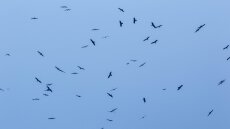
Black Kites (Milvus migrans)
Image: Holger Schielzeth -
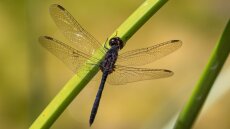
Black Percher (Diplacodes lefebvrii)
Image: Holger Schielzeth -
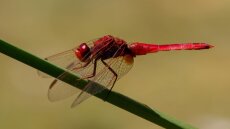
Broad Scarlet (Crocothemis erythraea)
Image: Holger Schielzeth -
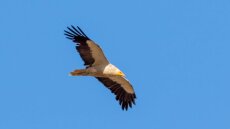
Egyptian Vulture (Neophron percmopterus)
Image: Holger Schielzeth -
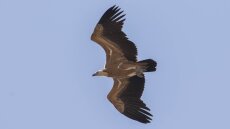
Griffon Vulture (Gyps fulvus)
Image: Holger Schielzeth -
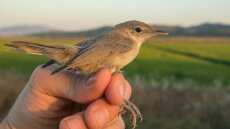
Isabelline Warbler (Hippolais opaca)
Image: Holger Schielzeth -
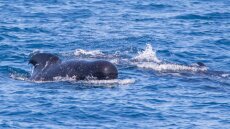
Long-finned Pilot Whale (Globicephala melas)
Image: Holger Schielzeth -
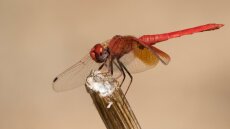
Orange-winged Dropwing (Trithemis kirbyi)
Image: Holger Schielzeth -
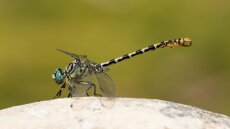
Small Pincertail (Onychogomphus forcipatus)
Image: Holger Schielzeth -
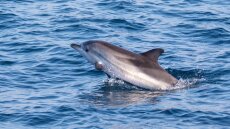
Striped Dolphin (Stenella coeruleoalba)
Image: Holger Schielzeth
Excursion 2016 and 2018: Croatia (Dugi Otok)
Island Biogeography
Responsible: Ulrich Brose
In 2016 and 2018, the course has been carried out on the island Dugi Otok in Croatia. During two weeks in the field, we have been sampling the fauna (terrestrial and marine) and flora of islands of different size. Day trips with small boats were organized to travel to the islands.
The students have chosen a species group and teamed up in small groups to carry out systematic samples. Species identification is done is a laboratory room with digital microscopes. The course includes lectures and hands-on training in island biogeography, ecological field sampling designs and estimation of biodiversity, and a day trip to the National Park Kornati.
-
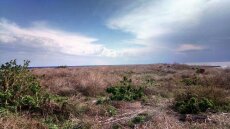
Vegetation on the islands
Image: Maximilian Bröcher -
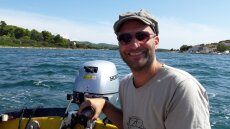
Boat trip to sample an island
Image: Myriam Hirt -
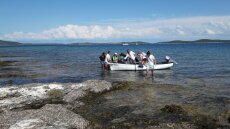
Landing at an island
Image: Myriam Hirt -
Group of students sampling species on an island
Image: Myriam Hirt -
Intensive sampling
Image: Myriam Hirt -
Sunset on Dugi Otok
Image: Thomas Boy -
Hike through the Kornati National Park
Image: Thomas Boy -
The islands of Kornati
Image: Thomas Boy -
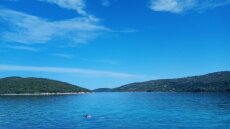
Archipelago of the Kornati
Image: Julius Weber -
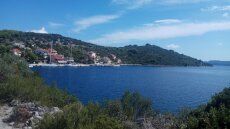
Coast of Dugi Otok
Image: Julius Weber
Excursion 2015, 2022, 2024: France (Provence, Côte-d‘Azur)
Ecology and Flora of Mediterranean ecosystems
Responsible: Christine Römermann and Markus Bernhardt-Römermann
- Camargue / Rhone estuary (conservation / rice and salt production)
- Crau (dry steppe / conservation and restoration ecology)
- Alpilles (garrigue and macchia)
- Upper Provence (dry forest / fire ecology / silviculture)
- Massif de Maures (ephemeral ponds)
- Côte d'Azur / Calanques (coastal vegetation / viticulture)
-
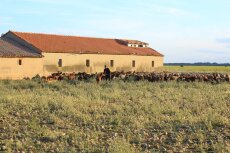
Sheepfold in the Crau
Image: Christine & Markus Römermann -
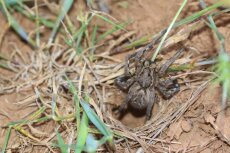
Tarantula in the Crau
Image: Christine & Markus Römermann -
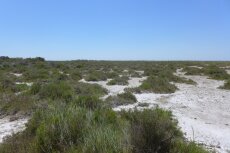
Salt vegetation in the Camargue
Image: Christine & Markus Römermann -
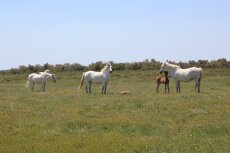
Camargue horses
Image: Christine & Markus Römermann -
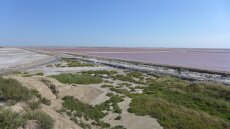
Salt pans in the Camargue
Image: Christine & Markus Römermann -
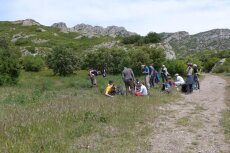
Plant identification in the Alpilles
Image: Christine & Markus Römermann -
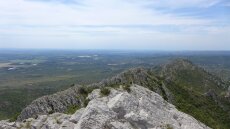
Tour des Opies, Alpilles
Image: Christine & Markus Römermann -
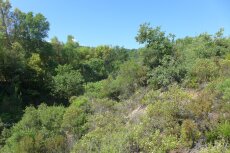
Maccia in the Massif de Maures
Image: Christine & Markus Römermann -
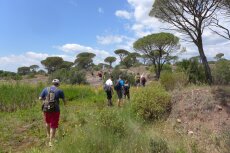
Massif de Maures
Image: Christine & Markus Römermann -
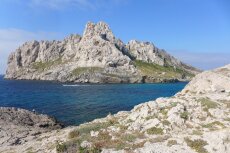
Coast at the Cap Croisette
Image: Christine & Markus Römermann -
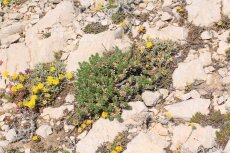
Rock vegetation on the Cap Croisette
Image: Christine & Markus Römermann